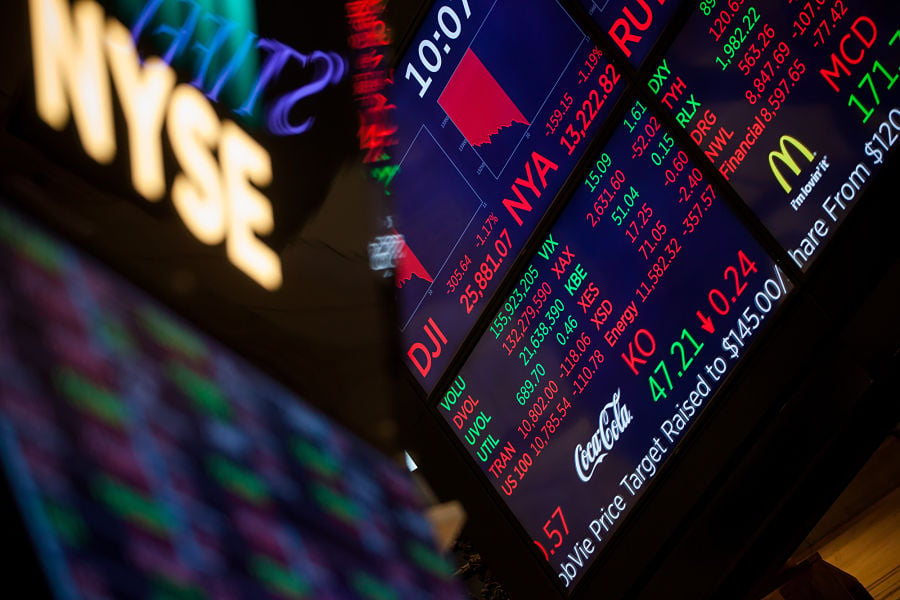

So much for the idea of waiting on a fund-tracking firm to measure a three-year track record before investing.
When it comes to exchange-traded funds, investors and financial advisers are jumping headlong into strategies that make sense now. Largely attributable to the transparency of index-based ETFs, there is solid evidence that the age of a fund no longer matters, according to Todd Rosenbluth, director of mutual fund and ETF research at CFRA.
Through the end of May, Rosenbluth identified 529 U.S. ETFs with at least $1 billion in assets and found that 93, or more than 17%, have only been around since 2015. Thirty-five of those $1 billion-plus funds have only been around since 2018.
“Investors are not waiting three years to buy an ETF,” Rosenbluth said.
While advisers still might generally hold off on traditional actively-managed mutual funds until they reach the three-year milestone, Rosenbluth said the unprecedented popularity of indexed ETFs is upending the old mode of waiting for track records and ratings from fund trackers like Morningstar.
“The major difference is these ETFs are tracking indexes that are often very easy to understand, and advisers can look inside and confirm what they’re getting,” he said. “So, if the ETF screen is offering exposure to what you’re seeking then age doesn’t matter.”
Examples of relatively young ETFs with large pools of assets include the $13.9 billion Communications Services Select Sector SPDR ETF (XLC), which was launched in June 2018, the $3.7 billion ARK Fintech Innovation ETF (ARKF), launched in February 2019, and the $4.1 billion JPMorgan BetaBuilders Developed Asia ex-Japan ETF (BBAX), launched in August 2018.
The 10 largest U.S. listed ETFs launched within the last three years combine for more than $60 billion in assets.
With the exception of the actively-managed ARK ETF, the fastest growing ETFs are variations on sector-based indexed strategies that give advisers and asset allocators exactly what they want and in the way they want it.
“CFRA has long advocated investors use the frequent disclosure of ETF holdings and key cost factors to assess the drivers of future performance rather than waiting for a fund to hit its three-year anniversary and looking backwards as other research providers do,” Rosenbluth said. “We believe as more ETFs come to market, advisers will focus more on the use case of the products rather than treat the funds like old-world mutual funds that need to demonstrate a long performance record.”
Kashif Ahmed, president of American Private Wealth, said there are multiple reasons for not waiting three years for a fund to earn a rating and a three-year track record.
“The old wait for a three-year track record was flawed in a sense, because many financial advisers simply waited three years to see if an ETF survived,” he said. “But there is no law that says a big ETF cannot lose favor just as quickly and meet a swift demise. After all, we live in the era of the Reddit and meme stock stupidity and any ETF overly exposed to such meme stocks will be wilder than the wildest roller coaster.”
Jeff Farrar, co-founder and partner at Procyon Partners, said a fund’s age is only a factor long enough to determine how well it tracks its benchmark.
“If the index is the S&P 500 there is less to worry about, but sometimes the index is Jerry’s backyard custom stock index and there is more to worry about,” he said. “Seeing what kind of liquidity and bid/ask spread it has is important, and I would say size is more of a factor in trying to determine if it is going to survive.”
Proof of index tracking is key, according to Paul Schatz, president of Heritage Capital.
“I won’t use an ETF until I can model it, and sometimes it takes a year of data, while other times it takes years,” he said. “I look at bid/ask spreads as well as AUM in the product, and I also analyze whether it’s an index or actively managed.”
Meanwhile, Schatz warns, “Those hypergrowth ETFs with concentrated positions are a red flag for me without lots of due diligence.”
It is worth noting that none of the ETFs on CFRA’s list were converted from existing mutual funds, meaning the assets under management started from scratch and were not rolled over in bulk.
Also worth noting, while CFRA applies ratings on most funds beginning a few months after they are launched, Morningstar doesn’t apply its performance-based star rating on funds until they achieve a three-year track record.

While industry statistics pointing to a succession crisis can cause alarm, advisor-owners should be free to consider a middle path between staying solo and catching the surging wave of M&A.

New joint research by T. Rowe Price, MIT, and Stanford University finds more diverse asset allocations among older participants.

With its asset pipeline bursting past $13 billion, Farther is looking to build more momentum with three new managing directors.

A Department of Labor proposal to scrap a regulatory provision under ERISA could create uncertainty for fiduciaries, the trade association argues.

"We continue to feel confident about our ability to capture 90%," LPL CEO Rich Steinmeier told analysts during the firm's 2nd quarter earnings call.
Orion's Tom Wilson on delivering coordinated, high-touch service in a world where returns alone no longer set you apart.
Barely a decade old, registered index-linked annuities have quickly surged in popularity, thanks to their unique blend of protection and growth potential—an appealing option for investors looking to chart a steadier course through today's choppy market waters, says Myles Lambert, Brighthouse Financial.
